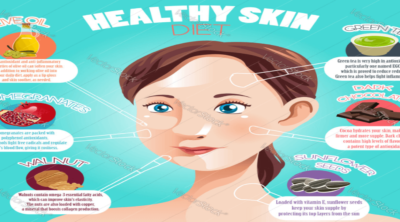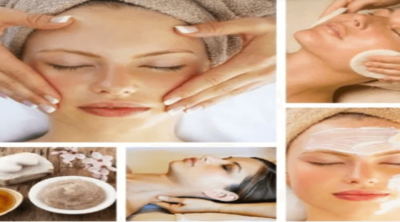
Skin treatments like laser resurfacing and chemical peels are popular treatment options. Both are used to rejuvenate the skin, and give you younger and better looking skin. However, given a choice, which is better? This BeautiSecrets article explores the pros and cons of both.
Did You Know?
Queen Cleopatra used to bathe in sour goat milk to rejuvenate her skin. Today, it could be considered as a chemical peel, because the lactic acid present in the milk acted as a peeling agent on the skin!
Hectic lifestyles, diet, and stress are responsible for faster aging. But thanks to the progress made in dermatology, skin problems and signs of aging can be overcome. A major breakthrough in dermatology, that has become popular trend, is skin rejuvenation. This can be achieved through various treatment options today.
Making news are two very popular options of skin rejuvenation―chemical peel and laser resurfacing. Both these options are procedures that renew skin, by peeling away the dead (upper) layers of the skin. These treatments are extremely beneficial in treating wrinkles, tan, bumpy skin irregularities, scars, especially acne scars and blemishes. They improve texture, tone, and overall quality of the skin.
Chemical peels have been popular since a long time. It was first introduced in 1903 by George Miller MacKee, who used phenol to treat facial scars. Comparatively, laser resurfacing is a fairly new procedure in cosmetology, and it has shown amazing results too. So, if you are considering one of the two options, or want to choose between the two, here is what you should know:
Laser resurfacing Vs. Chemical peel
Understanding the Terms
Chemical peels are one of the oldest procedures for treating skin problems. This type of skin treatment generally targets the face. The skin is cleansed, and a chemical is applied on it. Chemical solutions of glycolic acid, lactic acids, phenol, alpha hydroxy acid, and trichloroacetic acid are applied on the skin, which help in peeling outer dead layers of the skin. After a certain amount of time (10 minutes for lighter peels), this chemical is washed off. Treatments which include deep peels, generally have a pretreatment done to the skin. A sedative or anesthetic may also be administered for deep peels.
The word Laser is an acronym for ‘light amplification by stimulated emission of radiation’. Laser treatment for skin rejuvenation focuses on areas of the hands, face, and neck. In this procedure, the skin is numbed with local anesthetic, and concentrated beams of light are used to target blemished or irregular skin layers, and remove the dead layers, one layer at a time. The entire procedure may last anywhere between 30 minutes to about 2 hours. A facial mask is applied after the procedure.
Target Areas
➢ Chemical peels exfoliate the skin, repair the damage caused by tanning and sunburn, wrinkles, scars, uneven pigmentation, and acne.
➢ Laser resurfacing treatment is beneficial for treating skin issues like blemishes, scars, wrinkles, and freckles.
Side effects and Restrictions
➢ With chemical peels, a few side effects can be observed, like slight peeling of skin, redness, burning sensation, and swelling. Note that, not all side effects are severe and common. Some people may experience very mild effects, while some may have intense side effects. All of these will be conveyed to you by the doctor, before your treatment.
➢ The side effects of laser resurfacing are redness of skin, and itching. Certain other side effects may also be observed, like scarring, blisters, oozing, acne flares, cold sores, hyper pigmentation, and bacterial infection. The skin may also peel for about 5 days after treatment.
➢ After a chemical peel treatment, one cannot start routine work and social activities, at least for a week. If the peeling procedure includes peeling deep layers of skin, then the redness may take more time to clear. Laser peels are not recommended for people with acne problems, extreme wrinkles, or sagging skin.
➢ With both treatment options, you will be prescribed antibiotics and a strict aftercare routine.
Pros and Cons
➢ Chemical peeling may cause hyperpigmentation in some cases, while permanent or temporary skin discoloration may also be observed. Chemical peeling may not be suitable for people with a family history of discoloration. Also, women taking birth control pills, and pregnant women too, may have to reconsider getting a chemical peel treatment.
➢ Comparatively, laser resurfacing has lesser risk for hypopigmentation.
Cost Comparison
➢ According to the American Society of Plastic Surgeons, the average cost of laser resurfacing is around USD 2,222. This price is only the average cost, and it can vary according to the surgeon, expertise, and other treatment procedures. The average cost for chemical peeling is around USD 764. This again, may vary according to the intensity of peels, like lighter peels may cost less than deep skin chemical peels. Basically, the cost varies with desired result, amount of damage to skin, expertise of the surgeon, and at times, also the geographical location of the clinic. These do not include added costs like aftercare, anesthetic costs, facility charges, etc.
The Verdict
➢ Both chemical peels and laser resurfacing are outpatient procedures. After a thorough examination of your skin, the doctor would suggest the appropriate treatment. But before that, the intensity of skin issue, skin quality, thickness of the skin, desired result, and recovery time would be considered.
➢ Both these treatments provide good results and are excellent for treating specific skin problems. We suggest, let the doctor decide what suits best for your condition. Certain skin conditions can be best treated with laser, while some need peeling. After understanding each treatment option, you can decide what suits your skin and also your comfort levels.
All in all, both these options are excellent for skin rejuvenating and treating skin problems. The difference is in the procedures. Work out the best option for you with your cosmetic surgeon and opt for the same.


